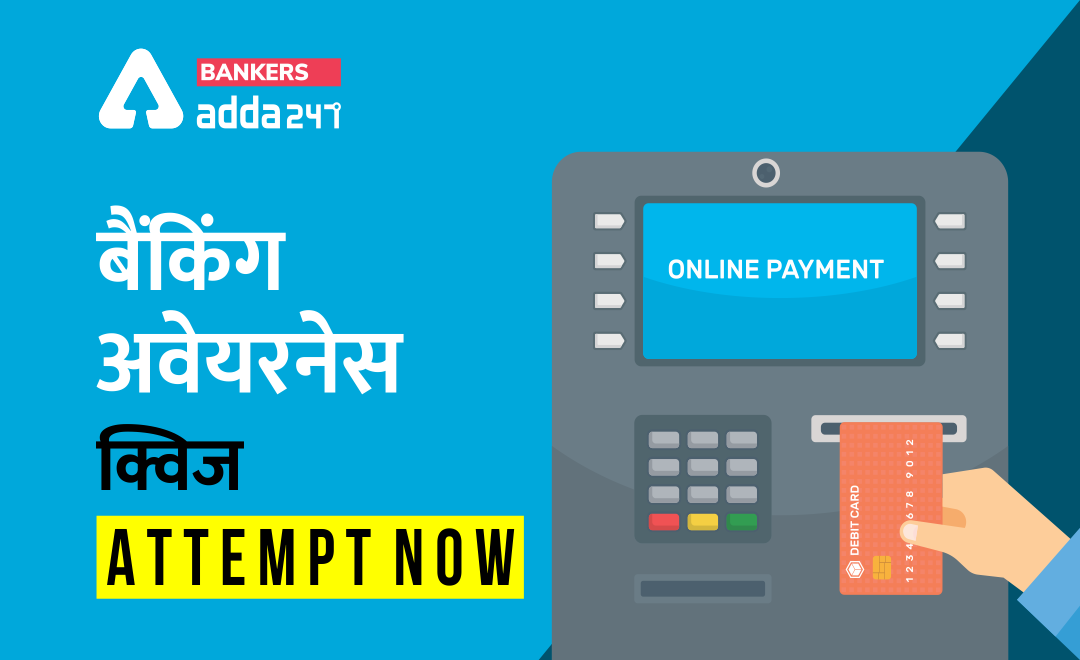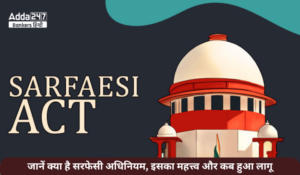
BANKING AWARENESS QUESTIONS
TOPIC – भारत में करेंसी सिस्टम
Topic: Currency System in India?
Q1. भारत में मुद्रा नोट और सिक्के जारी करने, प्रबंधित करने और वितरित करने का अधिकार किसके पास है?
(a) आईआरडीएआई
(b) सेबी
(c) आरबीआई
(d) सिडबी
(e) इनमें से कोई नहीं
Q2. भारतीय मुद्रा प्रणाली को ………… द्वारा एक दशमलव प्रणाली में परिवर्तित किया गया था, जिसे 1 अप्रैल, 1957 से लागू किया गया था।
(a) बैंकिंग विनियमन अधिनियम 1949
(b) भारतीय सिक्का अधिनियम 1955
(c) बैंकिंग कंपनी अधिनियम, 1946
(d) सिडबी अधिनियम, 1989
(e) इनमें से कोई नहीं
Q3. भारत सरकार ने किस वर्ष में अपनी पहली कागजी मुद्रा की शुरुआत की?
(a)1861
(b)1865
(c)1879
(d)1851
(e) इनमें से कोई नहीं
Q4. …………… को छोड़कर सभी करेंसी नोटों पर आरबीआई गवर्नर के हस्ताक्षर होते हैं।
(a) 10 रुपये का नोट
(b) 100 रुपये का नोट
(c) 50रुपये का नोट
(d) 1 रुपये का नोट
(e) इनमें से कोई नहीं
Q5. . 8 नवंबर 2016 को, भारत सरकार ने ……………..बैंक नोटों के विमुद्रीकरण की घोषणा की।
(a) ₹500 और ₹2,000 के बैंक नोट
(b) ₹500 और ₹1,000 के बैंक नोट
(c) ₹100 और ₹500 के बैंक नोट
(d) ₹200 और ₹1,000 बैंक नोट
(e) इनमें से कोई नहीं
Q6. पहली बार भारतीय मुद्रा का अवमूल्यन कब किया गया था?
(a)1959
(b)1955
(c)1949
(d)1951
(e) इनमें से कोई नहीं
Q7. भारतीय रिजर्व बैंक के पास ______ के अधिनियम के तहत मुद्रा जारी करने की शक्ति है?
(a) भारतीय रिजर्व बैंक अधिनियम, 1934
(b) भारतीय रिजर्व बैंक अधिनियम, 1931
(c) भारतीय रिजर्व बैंक अधिनियम, 1947
(d) भारतीय रिजर्व बैंक अधिनियम, 1939
(e) इनमें से कोई नहीं
Q8. 2000 रुपये के नोट में ………………… की छवि है।
(a) लाल किला
(b) टाइगर
(c) ताज महल
(d) मंगलयान
(e) इनमें से कोई नहीं
Q9. भारत में एक रुपये के नोट पर किसके हस्ताक्षर मिलते हैं?
(a)एसबीआई अध्यक्ष
(b) सेबी अध्यक्ष
(c) वित्त सचिव
(d) आरबीआई गवर्नर
(e) इनमें से कोई नहीं
Q10. करेंसी नोट आरबीआई द्वारा …………… के हस्ताक्षर के तहत जारी किए जाते हैं।
(a) उप राज्यपाल
(b) राज्यपाल
(c) कार्यकारी निदेशक
(d) मुख्य महाप्रबंधक
(e) इनमें से कोई नहीं
Solutions:
S1.Ans.(c)
Sol. The Reserve Bank of India has the authority to issue, manage and distribute currency notes and coins in India.
S2.Ans.(b)
Sol. The 1955 Indian Coinage (Amendment) Act, which came into force on April 1, 1957, introduced a ‘decimal series’. The rupee was now divided into 100 paisa instead of 16 annas or 64 pice.
S3.Ans.(a)
Sol. In 1861, the Government of India introduced its first paper money: ₹10 note in 1864, ₹5 note in 1872, ₹10,000 note in 1899, ₹100 note in 1900, ₹50 note in 1905, ₹500 note in 1907 and ₹1,000 note in 1909.
S4.Ans.(d)
Sol. The One Rupee note is issued by Ministry of Finance and it bears the signatures of Finance Secretary, while other notes bear the signature of Governor RBI.
S5.Ans.(b)
Sol. On 8 November 2016, the Government of India announced the demonetisation of ₹500 and ₹1,000 banknotes.
S6.Ans.(c)
Sol. The Indian Rupee was devalued in 1949, 1966 and 1991. But in 1991, it was carried out in two steps – on July 1 and July 3.
S7.Ans.(a)
Sol. All banknotes issued by RBI are backed by assets such as gold, Government Securities and Foreign Currency Assets, as defined in Section 33 of Reserve Bank of India Act, 1934.
S8.Ans.(d)
Sol. The Reverse side of Rs 2000 note has an image of Mangalyaan representing India’s first interplanetary space mission.
S9.Ans.(c)
Sol. The one rupee note is the only note bearing the signature of the Finance Secretary and not the Governor of the RBI.
S10.Ans.(b)
Sol. RBI has sole right to issue currency notes of various denominations except one rupee notes. The One Rupee note is issued by Ministry of Finance and it bears the signatures of Finance Secretary, while other notes bear the signature of Governor RBI.

 Types of Money and Measures of Money Sup...
Types of Money and Measures of Money Sup...
 Major Risks in Banking Sector - बै�...
Major Risks in Banking Sector - बै�...
 SARFAESI Act- जानें क्य�...
SARFAESI Act- जानें क्य�...

